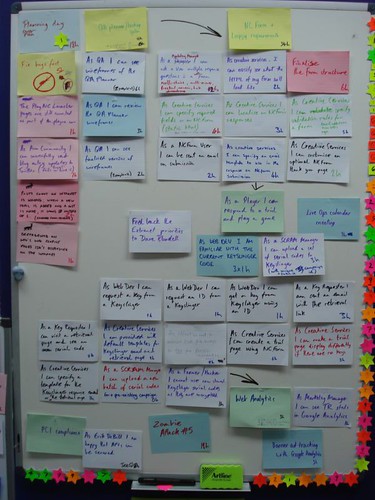Recently I found myself waking up one morning wondering, "Why did I say I'd do that!" What was it? I had committed to giving a session at the American Association for State and Local History conference about how not to do a boring session. Luckily, with many thanks to my colleague Lindsey Baker, director of the Laurel Historical Society who joined me as co-presenter, willing to try anything, and to a great group of session participants, we all had a good time. I thought I would share a bit of what we did with Uncataloged readers as you head off to conferences, Rotary meetings, or anywhere else where you stand up in front of a group.
First off, we planned. Lindsey and I did an agenda, revised the agenda, talked on the phone, emailed, shared our powerpoints, and met the morning of. I've been in sessions where the participants appeared to engage with each other for the first time on the podium. For us, the planning really helped.
Changing the Space
The chairs were set up in straight rows--we just rearranged them into slight curves, which felt more conversational and friendly. We put up big pieces of brown paper and asked participants to share their thoughts on what they love and what they hate about presentations as they entered. Even this little bit of change communicates that a session might not be the same old thing.
PowerPoint
Yes, we used PowerPoint, but we wanted to show that presentations can be fast-paced and compelling. We started by thinking about Pecha Kucha (20 slides/20 seconds per slide) as a starting point and discovered we could go even faster. Lindsey's presentation was about how to do a bad Powerpoint, and she did it by actually doing a great version of a bad Powerpoint. It's below, followed by my Powerpoint on what makes a good presentation.
In addition to Pecha Kucha, we modeled two other presentation techniques. Drawing on ideas about multiple intelligences, we asked participants to draw (not write about) their idea of what a conference participant in 2111 would look like (you can find the framework at the end of my Powerpoint above). Of course, there was some grumbling about not being able to draw, but it produced some interesting results, spurring lively conversation. We tried a stand-up interview as our next technique, leading one participant to comment, "It works so well we're now asking you questions about the project, rather than about interviewing!"
Our final assignment (accompanied by candy) was small group work. We took real session titles from the conference and asked small groups to design participatory, engaging conference sessions. From dropping a vase in a session on collections care to role-playing the closing of a historic site, the results were great. And the results were gained by really lively conversations--and that, to me, is the sign of a great session--when everybody's ideas are in play.
We made sure we had some time at the end to debrief. Participants were also encouraged to ask questions along the way and we both got out from behind the podium. There was nothing miraculous about our recommendations. They are ones we know from our work with museum audiences, but somehow those techniques are often forgotten when we step in front of that conference podium. It's just like working with school groups--if you don't approach the task with joy and enthusiasm (and a sense of humor) why would they?
We'd love to hear about other great suggestions for making any presentation more memorable. What techniques have you found effective?







